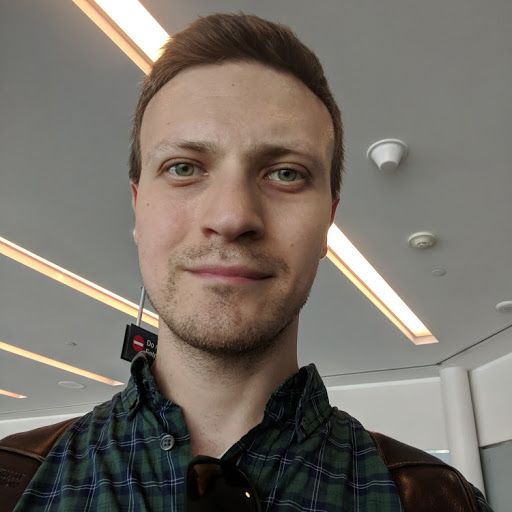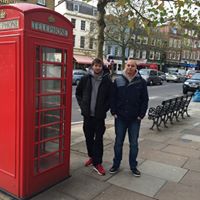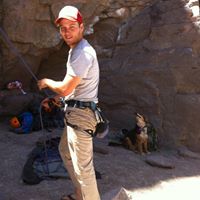Alex Ostrovsky
from Palo Alto, CA
Alex Ostrovsky Phones & Addresses
- 574 Arastradero Rd, Palo Alto, CA 94306
Us Patents
-
Method Of Compressing And Decompressing Graphics Images
view source -
US Patent:61284068, Oct 3, 2000
-
Filed:Apr 30, 1997
-
Appl. No.:8/846549
-
Inventors:Alex Ostrovsky - San Francisco CA
-
Assignee:Fujitsu Microelectronics, Inc. - San Jose CA
-
International Classification:G06K 900
G06K 936 -
US Classification:382166
-
Abstract:A method of compressing a block of graphics image data into a compressed block operates on uncompressed bitmap image data to generate a compressed representation of the image. It also operates on compressed bitmap image data to generate the original, uncompressed representation. To compress an image, all 8 pixel by 8 pixel blocks of the image are individually processed in sequence. For each block, all distinct colors present in the block are identified and assigned an ordinal number. A data structure for the block is generated to store the number of distinct colors present in the block, a compression image quality mask value, the actual RGBA quadruplet for each color present in the block, and for each distinct color, sets of group and line binary flags indicating the presence of a particular color at a particular pixel within the block. The data structure for the block is then stored in memory or in a computer file and the next block of the image is processed. This process is repeated for all blocks of the bitmap image.
-
Method Of Compressing And Decompressing Graphic Images
view source -
US Patent:60918500, Jul 18, 2000
-
Filed:Sep 24, 1998
-
Appl. No.:9/160504
-
Inventors:Alex Ostrovsky - San Francisco CA
-
Assignee:Fujitsu Microelectronics, Inc. - San Jose CA
-
International Classification:G06K 936
G09G 500 -
US Classification:382166
-
Abstract:A method of compressing and decompressing graphics images. The compression method operates on uncompressed bitmap image data to generate a compressed representation of the image. To compress an image, all 8 pixel by 8 pixel blocks of the image are individually processed in sequence. For each block, all distinct colors present in the block are identified and assigned an ordinal number. Two pixel colors are deemed distinct if the difference between the colors is greater than an epsilon value. The epsilon value is a function of the total brightness of the block. A data structure for the block is generated to store the number of distinct colors present in the block, the actual RGBA quadruplet for each distinct color, and a color ordinal number of each pixel in the block representing the distinct color of the pixel. To decompress the image, the RGBA quadruplets of all pixels within each block are reconstructed from the data structure for the block.
Wikipedia

Alexander Ostrovsky
view sourceAlexander Nikolayevich Ostrovsky (Russian: ; 12 April [O.S. 31 March] 1823 14 June [O.S. 2 June] 1886) was a Russian ...
Resumes

Principal Engineer
view sourceLocation:
Palo Alto, CA
Industry:
Information Technology And Services
Work:
Symantec
Principal Software Engineer
Illumina Sep 2014 - Jan 2016
Engineering Manager
Verizon Jan 2013 - Sep 2014
Lead Systems Consultant In Operations
Intel Corporation Jan 2013 - Feb 2014
Senior It Operations Engineer
Amur Group Nov 2008 - Dec 2013
Founder
Principal Software Engineer
Illumina Sep 2014 - Jan 2016
Engineering Manager
Verizon Jan 2013 - Sep 2014
Lead Systems Consultant In Operations
Intel Corporation Jan 2013 - Feb 2014
Senior It Operations Engineer
Amur Group Nov 2008 - Dec 2013
Founder
Education:
San Jose State University 1999 - 2004
Bachelors, Computer Science
Bachelors, Computer Science
Skills:
Linux
Mysql
Apache
Databases
Shell Scripting
Cloud Computing
High Availability
System Architecture
Virtualization
Amazon Web Services
Bash
Database Administration
Database Design
Disaster Recovery
Saas
Data Center
Vmware
Hadoop
Process Improvement
Scrum
Data Centre Architecture
Network Design
System Administration
Servers
Firewalls
Microsoft Sql Server
Subversion
Xml
Php
Change Management
Cassandra
Operations Management
System Deployment
Centos
Voip
Software Deployment
Software As A Service
Theory of Constraints
Mysql
Apache
Databases
Shell Scripting
Cloud Computing
High Availability
System Architecture
Virtualization
Amazon Web Services
Bash
Database Administration
Database Design
Disaster Recovery
Saas
Data Center
Vmware
Hadoop
Process Improvement
Scrum
Data Centre Architecture
Network Design
System Administration
Servers
Firewalls
Microsoft Sql Server
Subversion
Xml
Php
Change Management
Cassandra
Operations Management
System Deployment
Centos
Voip
Software Deployment
Software As A Service
Theory of Constraints
Interests:
Economic Empowerment
Education
Environment
Science and Technology
Animal Welfare
Health
Education
Environment
Science and Technology
Animal Welfare
Health
Languages:
English
Russian
Ukrainian
Russian
Ukrainian
Certifications:
Aws Certified Solutions Architect

Alex Ostrovsky
view source
Investor Support At Financial Engines
view sourceLocation:
San Francisco Bay Area
Industry:
Financial Services

Alex Ostrovsky
view sourceLocation:
United States
Googleplus

Alex Ostrovsky
Education:
State University of New York at Stony Brook - Biology

Alex Ostrovsky

Alex Ostrovsky

Alex Ostrovsky

Alex Ostrovsky

Alex Ostrovsky

Alex Ostrovsky

Alex Ostrovsky
Youtube
News

A song called 'Monkey Drums' is iTunes' 25 billionth download. What was your ...
view source- launched in April 2003 and has often celebrated milestones like this along the way. They hit their first billion in 2006 when a Michigan man, Alex Ostrovsky, purchased Coldplays Speed of Sound (he got a call from Steve Jobs, 10 iPods, a new iMac, and $10,000 in iTunes credit for his troubles). Accor
- Date: Feb 06, 2013
- Category: Entertainment
- Source: Google

Alex Ostrovsky
view source
Alex Ostrovsky
view source
Alex Ostrovsky
view source
Alex Ostrovsky
view source
Alex Ostrovsky
view source
Alex Ostrovsky
view source
Alex Ostrovsky
view source
Alex Ostrovsky
view sourceOther Social Networks

Alex Ostrovsky Google+
view sourceNetwork:
GooglePlus
Alex Ostrovsky - Manage my website Undrgrndsound.com, DJ, Construction and other little things to get by. - State University of New York at Stony Brook.
Myspace
Get Report for Alex Ostrovsky from Palo Alto, CA







